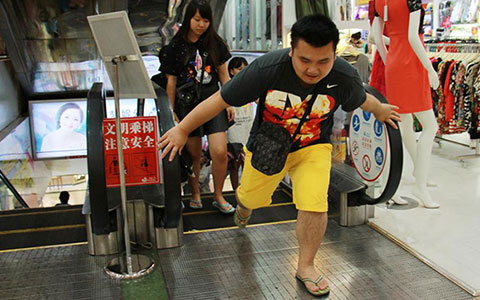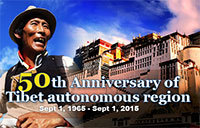Environment vs economy a delicate balance
By Wu Wencong (China Daily) Updated: 2012-06-11 08:55Environmental protection can be balanced with the need to stimulate a local economy, especially when constrained resources prompt a government to plan ahead, as is the case in Liaoning province.
Liaoning's average per capita water capacity is only 800 cubic meters, about one-third of the national level, which in turn is just 28 percent of the world level.
Lacking sufficient, convenient surface water, local people and industries have been using wells.
In 2011, they pumped out more than 6.4 billion cu m of groundwater, accounting for almost 45 percent of the province's total water use, according to figures from the local water resources department.
Compared with the exploitable amount, the exploitation rate of groundwater in Liaoning province has exceeded 95 percent, creating ecological problems such as seawater encroachment.
Take the coastal city of Dalian, for example. The seawater encroachment area was more than 100 square kilometers at the beginning of the 1980s. But the figure soared to almost 900 sq km in 2007, according to the local government.
The government began taking action in January 2011. It announced a shutdown of all of the region's groundwater projects, except for emergency use.
This February, the provincial government implemented the toughest regulations yet to address excessive exploitation of groundwater. It banned all new groundwater drilling projects and set a target of cutting the extraction quantity by more than 1.2 billion cu m by 2015.
Many surface water transfer projects are in progress to ensure water capacity in all cities in the province. Also, individuals and companies have to change the way they consume water, by reusing, recycling and reclaiming it.
For a province whose economic development largely depends on water-intensive heavy industries, such as iron and steel smelters and oil production, promoting these measures isn't easy.
After all, getting tap water from surface sources is much more expensive than groundwater, but Liaoning has found one solution.
Cooperation between a sewage treatment plant and Huaneng Yingkou Co-Generation Co in the coastal city of Yingkou is one of the many model projects.
The plant has a reclaimed water production capacity of 50,000 cu m a day, as required in the water resources assessment before it was approved and built in 2006.
Half of the reclaimed water is sent to the co-generation company and used as circulating cooling water and processing water after advanced treatment.
The reclaimed water costs 0.8 yuan (13 US cents) less than tap water per cu m, "which can save us 6.4 million yuan every year, based on our water consumption of 8 million cubic meters", said Zhai Shutao, general manager of the co-generation company.
When the second and third phases of the co-generation company enter service, 60,000 cu m of water will be needed every year, accounting for all the reclaimed water produced by the sewage treatment plant.
"For the co-generation company, the use of reclaimed water not only saves money, it was also a must for them to get their project approved," said Chen Ming, deputy head of the Water Resources Department at the Ministry of Water Resources.
"Finding a way to survive the stringent policy is not that hard as many people may think," Chen said.
"The methods are there, it's just that those officials haven't been pushed that hard in the past."
wuwencong@chinadaily.com.cn
- Demand for English-speaking staff soar at workplaces
- Chinese like shopping on US websites
- New law to boost NGOs
- Shaolin Temple complains to police about online accusation
- Typhoon season expected to be longer than usual
- Half workers in China choose not to take paid leave
- Chinese student detained in Iraq freed
- Tian'anmen gets early makeover for grand parade in September
- Oil giants sued over Bohai spill
- Lax checks led to 'chaotic incidents'







